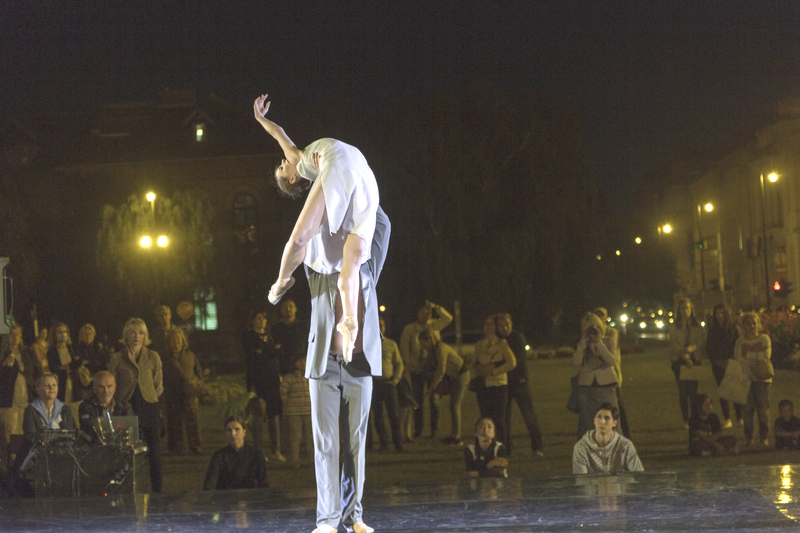Since theaters are closed, or severely limiting audiences, an option to consider for performance is an outdoor venue. It is not an easy transition, as many factors and conditions must be considered before your dancers can hit the stage.
For those planning to perform in a parking lot or on level ground outside, it is important to prepare the surface before rolling out a dance floor. In all cases, it is necessary to first clear the area of all foreign debris. Roll out a thin vinyl tarp or use a vapor barrier. Overlap and attach with waterproof tape. Then roll out your dance floor, taping all seams and the circumference. Use vinyl tape, which is water-resistant. Even if the floor is amplified, sound can be an issue for your tap dancers.
Changes in temperature and humidity can impact the floor surface and interfere with performance. Be prepared to dry mop the floor often and to clean the floor prior to performance.
The sun can “attack” your Marley floor with UV radiation, which will permanently age the floor, resulting in it becoming more rigid and vulnerable to cracking. Heat can be absorbed by the floor, which can cause it to expand, resulting in bubbles or waves. Best to loose lay the floor gapping the seams 1/16 of an inch and taping the floor just prior to performance.
Likewise, cold can contract the floor opening gaps at the seams. Use 2” vinyl top tape to secure the floor. Vinyl tape is elastic and is better suited to move with the floor than cloth tape.
If your floor is going to be down for awhile, it is recommended that you put a protective tarp over it to protect against weather and especially the sun. Temperature and humidity can vary in outdoor environments, so be prepared to wet and dry mop your floor just prior to performance and at intermission.
If your kids are doing a fair amount of floor work, consider dry mopping between numbers.
When transporting your floor, make sure it is wrapped around a sturdy core and, if possible, stored standing on end. Flooring left lying flat can develop roll set, which creates “waves” or bubbles when the floor is rolled out.
Installing a floor should not involve tugging, stretching or pulling it to lie flat. On a pre-performance day, roll out the floor indoors to make sure you will not have a problem with it the day of the performance.
Gap the seams 1/16 of an inch before taping to allow for expansion. If you are performing at night, consider using Glo tape spikes so the dancers can see the edges of the performance area. Have water and towels “backstage”, and remember that lights attract bugs and bugs can be ingested. A note not to be distracted by them and to keep dancers’ mouths closed while on stage dancing.
Another option is a Marley flooring that incorporates a dual density foam backing that is safe for use over a concrete or other outdoor hard surface. It is very exciting to get together to showcase our dancers, but it is also important to keep them as safe as possible.
For those of you who have secured a platform stage, check to make sure it is secure and level before rolling out your Marley. Keep in mind that in most cases, your dancers will not be performing on a floating wood subfloor in outdoor environments, so given the environmental concerns and the flooring, you are probably not operating under ideal conditions. Sometimes, we must make do, and these are those times. If you plan to continually use outdoor spaces, there are options to have a floating flooring system that is transportable and safe.
Any questions related to outdoor flooring options can be directed to randy@stagestep.com.
By Randy Swartz of Stagestep.















